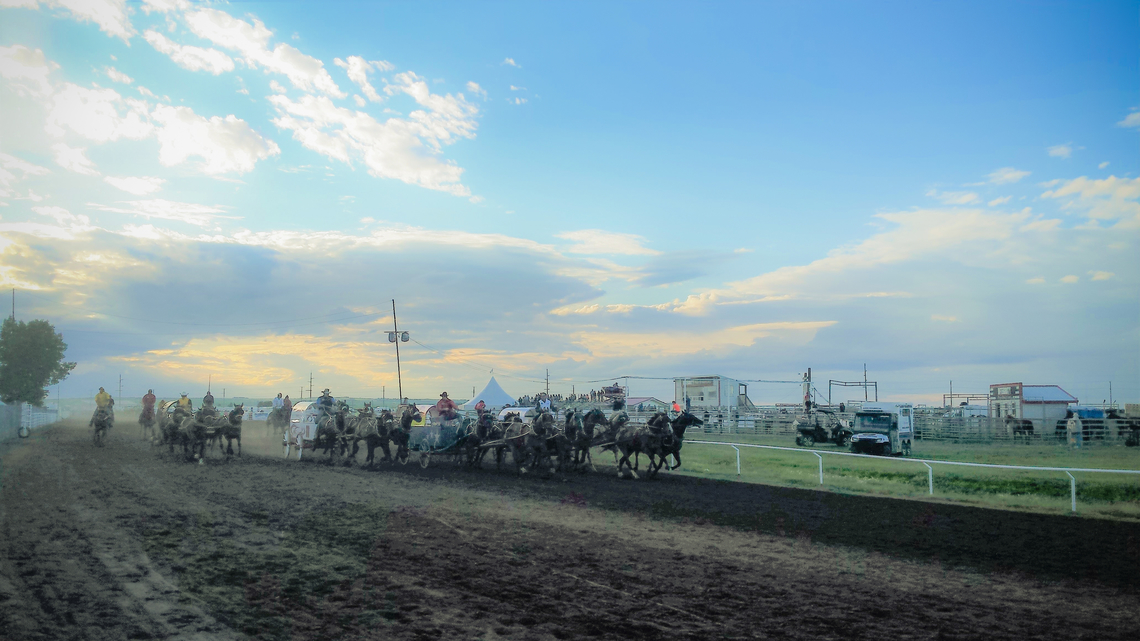Science is a Bumpy Ride
Wednesday, June 28, 2017

At first glance, science and chuckwagon racing have very little in common. Despite this, both can be a bumpy ride. A chuckwagon race is a literal “bumpy ride” by anyone’s standards. While science doesn't have as many literal bumps in the road, it can still be full of challenges and hiccups.
For those of you who aren’t up to date, I’ve been working on a research project with the aim of improving chuckwagon racing safety. Specifically, I’ve been studying chuckwagon poles, the metal pipes that extended from the front of the wagons and act as attachment points for the horses. When I wrote my last blog post, I was busy trying to figure out how to get some useful quantitative data relating to the behaviour of a pole in the field.
I’m happy to report that the last few weeks have been productive and I’m now starting to get some data. The system I’m using will simultaneously collect three types of data: acceleration data from inertial measurement units (IMUs), video data from a GoPro camera, and strain (deformation) data from a collection of strain gauges.
Last weekend, at the High River Rodeo, I had the chance to test the video and inertial measuring data. Safely protected by Tupperware and duct tape, the accelerometers (pictured attached to the wagon) managed to survive the trip. The data are, well, bumpy. Just for fun, I decided to track my drive to High River using the accelerometers. While my hatchback is far from a race car, I figured that the magnitude of the acceleration would be similar to that of the chuckwagons. I was very wrong. The chuckwagon experienced acceleration twice as strong as my car’s acceleration. The accelerometers also picked up the intense vibrations from the ride in the chuckwagon, confirming what I already knew about the bumpiness of a ride in a chuck.
Now that the IMUs and camera are providing data, I’m working on getting the strain gauge system implemented. This is tricky for a couple of reasons. The strain gauges need to be connected with wires to a receiver, which will sit inside the wagon box. This is a small technical nightmare because of the taxing environment that chuckwagon racing presents for using any instrumentation. The wires and their delicate connections to the gauges will have to be protected from dust, vibration, moisture, heat, and impact, all while not interfering with the horses or the wagon. It won’t be easy, but I’m comforted by the fact that ample amounts of duct tape can help me along the way.

Setting up strain gauges takes practice and precision. Fortunately, the Calgary Stampede very provided a pole for the project, which I’ll be able to use to refine the strain gauge procedure in a lab environment. Mark Sutherland generously drove the pole from Saskatoon to his ranch, near Okotoks. With the help of a friend with a roof rack, we loaded up the pole and brought it to Calgary (pictured left). The University of Calgary’s Human Performance Laboratory now has its very own chuckwagon pole.
As more data flow in, I’m getting more and more excited about the project. If you have any thoughts or comments, or if you just want to chat, send me an email at pollocks@ucalgary.ca.
Wishing you a smooth ride,
Sam
Posted by:
Sam Pollock

